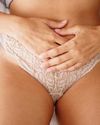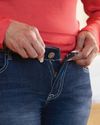
Also known as painful bladder or bladder pain syndrome, interstitial cystitis usually affects women and starts in their 30-40s.
Main symptoms include intense pelvic pain below the umbilicus, and sudden strong urges to pee. The pain can be worse when the bladder is full, with temporary relief once you have peed, worse during periods or after certain foods or drinks. Symptoms may come and go over weeks or months.
The exact cause isn’t clear – there is no infection, so antibiotics will not help. Theories include lining damage irritating the bladder, muscles and nerves; pelvic floor muscle disorder; auto-immune disorder attacking bladder tissue, and an allergic reaction. Interstitial cystitis could be a part of systemic disorders, as it has been associated with conditions such as fibromyalgia, chronic fatigue and lupus.
Your GP will examine you and test a urine sample to exclude infections or other causes, before referring you to a specialist such as a urologist. They may suggest a cystoscopy – a procedure to examine the inside of the bladder with a tube and camera. In some cases, cystoscopy shows the bladder is inflamed or scarred.
Treatment
There is no known cure. Lifestyle changes may be suggested, but medicines and therapies can help.
هذه القصة مأخوذة من طبعة June 15, 2021 من WOMAN'S WEEKLY.
ابدأ النسخة التجريبية المجانية من Magzter GOLD لمدة 7 أيام للوصول إلى آلاف القصص المتميزة المنسقة وأكثر من 9,000 مجلة وصحيفة.
بالفعل مشترك ? تسجيل الدخول
هذه القصة مأخوذة من طبعة June 15, 2021 من WOMAN'S WEEKLY.
ابدأ النسخة التجريبية المجانية من Magzter GOLD لمدة 7 أيام للوصول إلى آلاف القصص المتميزة المنسقة وأكثر من 9,000 مجلة وصحيفة.
بالفعل مشترك? تسجيل الدخول

10 OF THE BEST Buys for CHARITY
Look great and support Breast Cancer Awareness Month this October

How to HAGGLE
Save those £££s by plucking up the courage to negotiate

Your wellbeing
LATEST HEALTH SOLUTIONS FOR YOUR MIND AND BODY

Here to help
LET COUNSELLOR KEREN LIGHTEN YOUR LOAD

Good to GLOW
Plant your bulbs now for a lovely bright start to spring

Painted VASES
Prettify empty jars and bottles with this quick craft project

Escape to OXFORD
Delve into the city's rich cultural heritage for a wonderful weekend

Sail through menopause WITHOUT WEIGHT GAIN!
Middle-aged spread may seem inevitable - but it really doesn't have to be

Woodland wonders
When you go down to the woods, you'll find a whole new world teeming with life

'We should all be dancing'
Singer and actor Toyah Willcox on overcoming adversity, ageing and Strictly Come Dancing